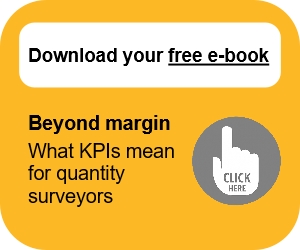Profit
In accounting, the term ‘profit’ refers to the financial benefit that is achieved when the work done and the expenses incurred by a business are exceeded by the amount of revenue generated by the activities of the business.
Put simply, profit is calculated as: Total revenue – Total expenditure
The owners of a business are responsible for deciding what to do with profit, and may reinvest it in the business, pay off outstanding debts, reward employees with bonuses and pay-rises, make payments to shareholders, and so on.
There are different types of profit that can be measured:
Profit may also be referred to as a ‘profit margin’. Profit margin is the percentage of the gross revenue that represents profit.
For more information, see Profitability.
When contractors submit tenders for construction works, they will typically identify profit and overheads as separate items in addition to the cost of labour, materials, plant, and so on.
Profit may be calculated as a percentage, which will vary according to risk, workload and economic climate and so on. It can also relate to the turnover of capital employed for each project; the more times a contractor can turnover its capital on a project the more it can afford to cut margins.
Construction contracts will generally provide for the contractor to claim direct loss and expense as a result of the progress of the works being materially affected by relevant matters for which the client is responsible. Contracts generally allow direct losses to be recovered (such as the cost of labour and materials), but may exclude indirect or consequential losses (such as loss of profit).
[edit] Related articles on Designing Buildings
Featured articles and news
British architecture 1919–39. Book review.
Conservation of listed prefabs in Moseley.
Energy industry calls for urgent reform.
Heritage staff wellbeing at work survey.
A five minute introduction.
50th Golden anniversary ECA Edmundson apprentice award
Showcasing the very best electrotechnical and engineering services for half a century.
Welsh government consults on HRBs and reg changes
Seeking feedback on a new regulatory regime and a broad range of issues.
CIOB Client Guide (2nd edition) March 2025
Free download covering statutory dutyholder roles under the Building Safety Act and much more.
AI and automation in 3D modelling and spatial design
Can almost half of design development tasks be automated?
Minister quizzed, as responsibility transfers to MHCLG and BSR publishes new building control guidance.
UK environmental regulations reform 2025
Amid wider new approaches to ensure regulators and regulation support growth.
The maintenance challenge of tenements.
BSRIA Statutory Compliance Inspection Checklist
BG80/2025 now significantly updated to include requirements related to important changes in legislation.
Shortlist for the 2025 Roofscape Design Awards
Talent and innovation showcase announcement from the trussed rafter industry.
OpenUSD possibilities: Look before you leap
Being ready for the OpenUSD solutions set to transform architecture and design.
Global Asbestos Awareness Week 2025
Highlighting the continuing threat to trades persons.
Retrofit of Buildings, a CIOB Technical Publication
Now available in Arabic and Chinese as well as English.
























